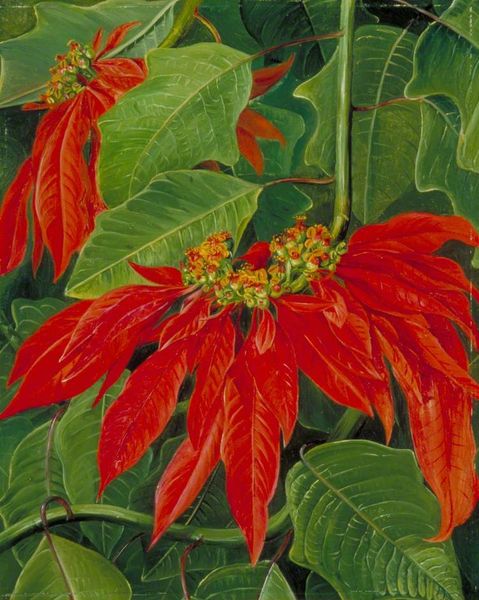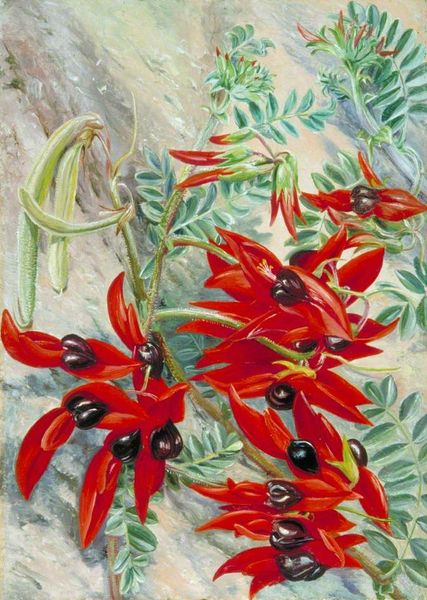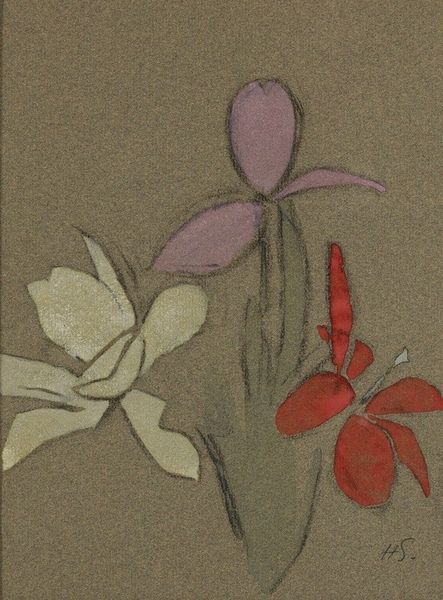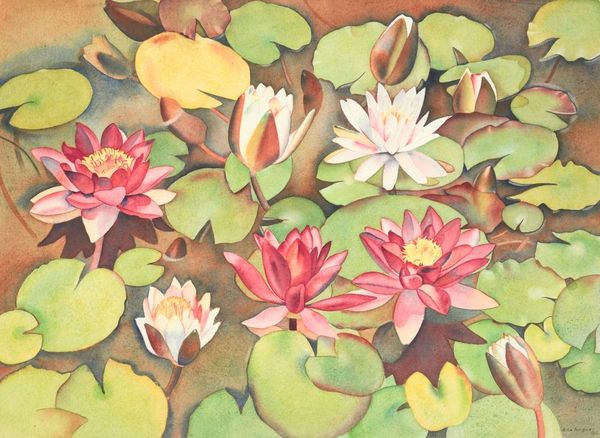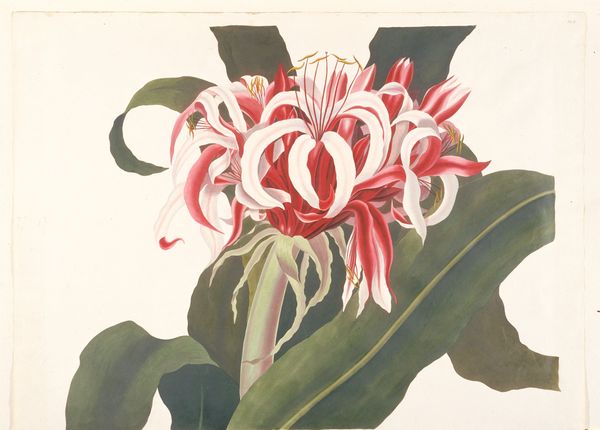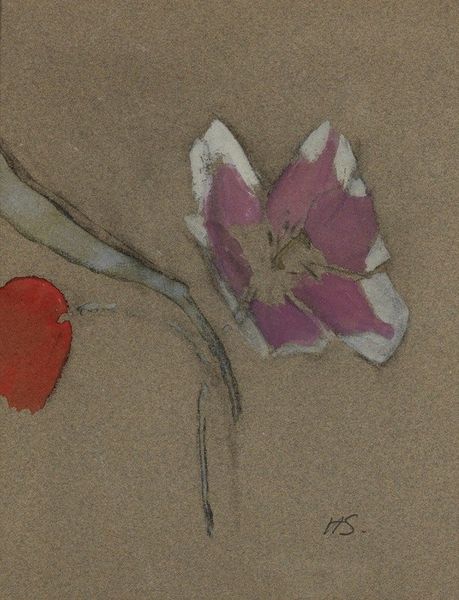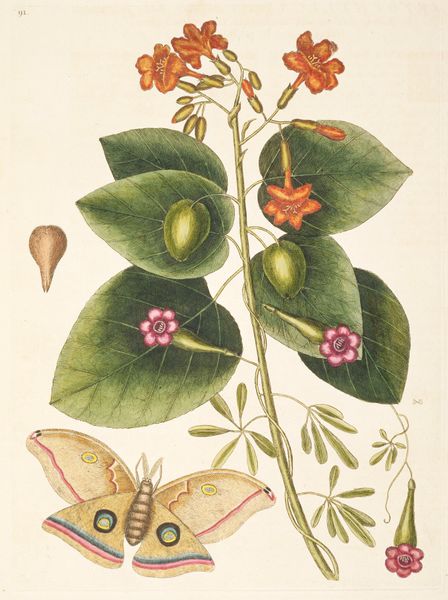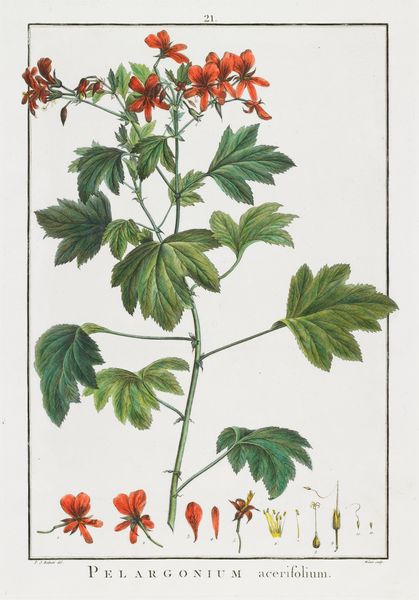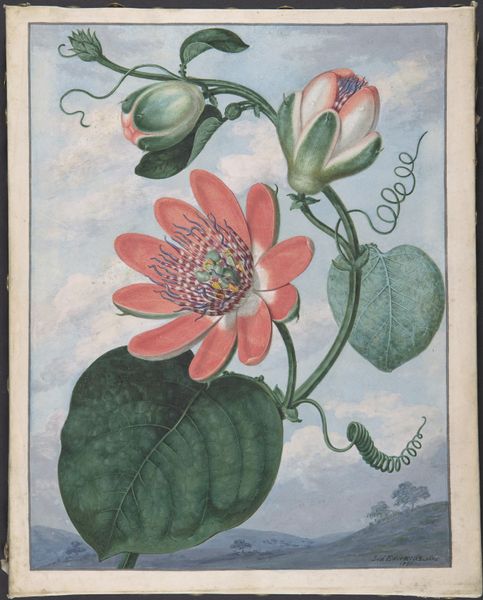
Copyright: Rita Angus,Fair Use
Editor: Here we have Rita Angus's "Passionflower," painted in 1943 and currently held at the Museum of New Zealand Te Papa Tongarewa. It’s a watercolor piece and my first impression is of this almost startlingly bright bloom against this earthy, muted background. What strikes you about this work? Curator: Ah, yes, the dance of colour, the tension of opposites, always gets me! To me, that passionflower just sings. There’s a vibrancy, a life-affirming quality. You know, Angus often used botanical subjects, but rarely in a purely representational way. They’re not just pretty pictures. The Passionflower, painted during the tumultuous time of World War II, could be interpreted as a symbol of hope, perhaps even resilience in the face of hardship. Does that ring true for you? Editor: That's a very interesting point, because I thought it was such a personal portrayal of such a personal object. Curator: Precisely! Look closer, observe her precise application of the watercolour, her meticulous attention to detail, you feel she almost holds a botanical magnifying glass for our imagination. And the use of realism also underscores a deeply personal way to interpret it as if she wanted us to feel we are almost right in the image. The muted palette heightens that vibrant flower at the centre - it's a reminder that even amidst hardship, beauty and life persevere. That’s really special. Editor: I can definitely see that now. It's almost like the flower is whispering a secret about endurance. Curator: Exactly! You know I might wander past this one again myself today, it definitely gives my imagination a lift. Editor: Absolutely. I appreciate that this work, I appreciate your insights so much, thank you for taking the time. Curator: My pleasure entirely. It has also inspired a completely new view on the power of such close attention.
Comments
No comments
Be the first to comment and join the conversation on the ultimate creative platform.
